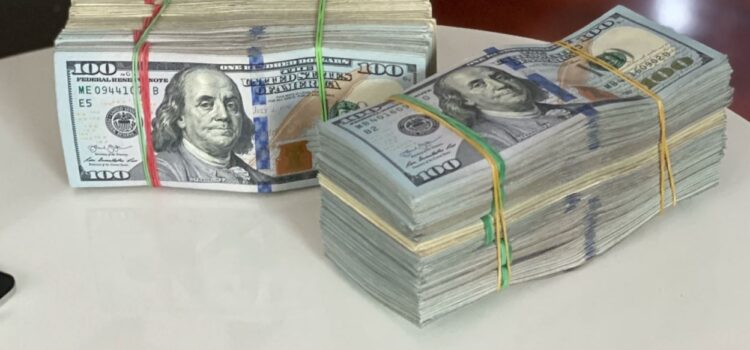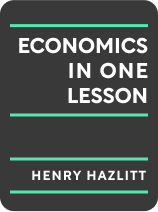

This article is an excerpt from the Shortform book guide to "Economics in One Lesson" by Henry Hazlitt. Shortform has the world's best summaries and analyses of books you should be reading.
Like this article? Sign up for a free trial here .
Are there any negative effects of government intervention? How does government intervention in the economy influence the supply-and-demand equilibrium?
When the government intervenes in the economy—even in an effort to help—it interferes with the natural equilibrium of supply and demand. This may create unintended ripple effects.
Keep reading to learn about different types of government intervention and how they affect the economy at large.
When the Government Intervenes
We’ve seen over and over the ill effects of government intervention in the economy. Despite occasional short-term pains to specific groups (which interventions often aim to prevent), the economy maintains balance and high productivity levels when it’s governed by supply and demand.
There are three main ways government intervention can damage the economy.
1. Government Loans Support Inefficient Businesses
Fallacy: Government loans enable individuals and businesses to achieve prosperity that they otherwise couldn’t, which contributes to collective productivity and wealth.
Reality: Government loans divert resources away from the businesses and individuals who could create the most productivity and wealth, to businesses and individuals who would and should be weeded out by private industry standards.
Similar to the drawbacks of excessive taxes, government loans and credits are problematic when you consider the cost to taxpayers in order to provide those loans. Supporters of government loans argue that the government should make investments that are too risky for private industry—in other words, proponents say that the government should make investments with other people’s (taxpayers’) money that private individuals and institutions won’t risk with their own money. As we’ll see, this leads to wasted capital and lower production.
In order to receive any loan, a borrower must have assets or a reputation for honesty and high productivity, so that the lender can be confident that the loan will be repaid. Private lenders risk their own money, thus they have strict standards for selecting loan recipients. (Banks technically risk other people’s money, but, if a borrower defaults, the bank has to come up with the funds.) By contrast, the government risks taxpayers’ money, thus it gives loans to people who fall short of private lenders’ standards. In effect, this means that the government awards loans to people who are less likely to have the skills and experience to make enough profits to repay the loans.
To illustrate this, we’ll use the example of government loans that enable farmers to buy equipment, livestock, land, or other forms of capital for their business. Proponents argue that these kinds of loans tip the scales for farmers who can’t afford land or equipment on their own. The government money enables a farmer to either launch her business or increase her productivity, both of which help her to earn profits that she can use to repay the loan. As a result, proponents say that the farmer ends up contributing more to the economy than she otherwise would have, which makes the return on the loan greater than the government’s initial investment.
The proponents’ argument would hold up if the loan were from a private lender, but, since the government uses lower standards for lending, the loan actually results in reduced production and collective wealth. The government’s lower standards for lending has two consequences:
- Many government loans are never repaid, because the farmers aren’t reliable to pay the debt or because they lack skill and experience to make the business successful.
- Farmers who get government loans produce less from their capital—such as land and farm equipment—than more highly skilled farmers would. The farmer who receives the government loan is inherently less skilled and less productive than farmers who can get approved for private loans. A limited amount of capital exists, meaning that the capital one farmer gains is capital that is unavailable for another farmer (for example, there are limited acres of farmland, and when one farmer buys 100 acres, that’s 100 acres off the market for another farmer). If the less-skilled farmer receives her government loan before a more competent farmer receives a private loan, then limited resources are being allocated to an inefficient producer.
For example, Farmer Adam and Farmer Ben are eyeing the same plot of farmland. Farmer Adam has an impressive record of productive, efficient farming and high profits—he’s an ideal candidate for a private loan. Farmer Ben, on the other hand, can’t get a private loan because he has no savings and no record of successful farming.
Since Ben has no other way to get the money he needs to buy the land, government loan advocates favor lending him the money, reasoning that Adam has other options through private loans. In these advocates’ view, giving Ben the opportunity to become a productive farmer is in the community’s best interest. However, when Ben gets the government loan and buys the land, it’s no longer available for Adam. Adam may have other sources of money, but there was just one 100-acre parcel available in the region.
While Ben may succeed and become a high-producing farmer, collectively, the farmers who meet the government’s lower borrowing standards are less efficient and more likely to fail—yet they get capital at the expense of more productive farmers who are denied government credits because they meet private lenders’ higher standards. If there is more land available for Farmer Adam, he could still face higher interest rates or higher land prices as a result of the government’s loans. Either way, the community ends up worse off—not better—because of the obstacles that competent Farmer Adam must face.
Government-Guaranteed Loans and Subsidies
In addition to direct loans, the government also invests in individuals and companies through government-guaranteed loans as well as subsidies. As with government loans, these investments reduce overall productivity and wealth because they fund individuals and businesses who otherwise would—and should—be weeded out in private industry.
(Shortform note: In a government-guaranteed loan, the borrower receives a loan from a private lender, and the government agrees to cover the debt if the borrower defaults. A subsidy to an individual or a company removes financial burdens—due to market failures or other external forces—either directly, via a cash payment, or indirectly, via a tax cut.)
First, we’ll look at the home-building industry as an example of the ripple effects of government-guaranteed loans and mortgages to businesses and individuals. As with government loans, there are similarly low standards for borrowers on government-guaranteed loans. The loans enable people to buy houses that they can’t afford, which falsely signals the building industry to erect more homes, which raises the cost of construction, and that high cost is transferred to homebuyers—including those with government-guaranteed mortgages.
In the case of government subsidies, the funding resuscitates businesses that are in danger of failing. As with any government-funded venture, the money used for the subsidies is funded by taxes from individuals and businesses—and, as we’ve discussed, those taxes reduce taxpayers’ purchasing power to support other businesses. Although there may be circumstances under which subsidies are merited, in general, subsidies support unsuccessful businesses at the expense of successful businesses.
2. Tariffs Support Inefficient Industries
Fallacy: Tariffs help industries compete in a global market, which prevents employees in those industries from losing their jobs.
Reality: Tariffs shift money, manpower, and productivity away from efficient industries in order to support inefficient industries.
Policies that put a thumb on the scales of the market in order to support employment levels—such as public works projects and spread-the-work practices—ultimately hurt production and, consequently, national wealth. Tariffs are another example of a misguided attempt to support employment that, in reality, has no impact on employment and actually hurts production and wages.
With tariffs, companies that aren’t efficient and productive enough to compete in the global market are able to stay in business. Without tariffs, the resources and manpower that would have gone to those inefficient businesses can be redirected to industries that have high production levels, which increases overall productivity. Higher productivity leads to greater national wealth, which raises wages overall. In other words, everyone benefits when people can buy what they want at the best price available, because that structure supports the businesses that are most productive and efficient.
As with everything else, there are certain tariffs that may be necessary, such as those supporting essential wartime industries. Problems arise when the tariffs are imposed primarily to support American employment, wages, or wealth, as we’ll see in the next example.
Tariff’s Invisible Consequences
Let’s look at the impact of tariffs using the example of an American sweater manufacturer. The U.S. company sells sweaters for $30 each, and it’s losing business to a British manufacturer that sells sweaters for just $25. The American company asks the government to impose a $5 tariff, which makes the British sweaters cost $30 for Americans and allows the U.S. company to be competitive. Proponents of the tariff point to all the employees of the American company who will lose their jobs if the business fails. Passing the tariff keeps American sweater workers employed, so that they can earn money to spend, thereby supporting wages in other industries.
However, the British company then has fewer profits to spend on goods, including imports from the U.S. The tariff that helped the American sweater industry hurts other industries, especially those with large export markets. In the sweater example, the tariffs hurt British sweater sales, which means that those manufacturers have less money to import American wool and American-made parts for its machines.
On the other hand, if the tariff is denied, there are several positive ripple effects:
- Consumers who buy British sweaters at $25 will have $5 in savings to spend and support other industries.
- The workers at the American company are likely to lose their jobs—but consumers’ increased buying power and support of other industries means that there are other jobs available. As a result, there is no net effect on national employment.
- The British company enjoys higher sales and greater profits, which it can spend on buying other goods (the company itself will spend some of the profits, as will the workers whose wages are paid by sales). Some of this money will inevitably be spent on importing American goods, which brings wealth back into the U.S.
If an existing tariff is repealed, the net effects will be positive, but there is an immediate negative impact on workers and companies within that industry. Many—if not all—of the firms will go out of business, and those employees will be out of work. Employees that have specialized training and skills will suffer an even greater loss, since they’ll be forced to enter another industry at a lower level of expertise and, most likely, pay. This is another danger of imposing tariffs in the first place: Not only do they do harm while they’re in effect, but also if they’re repealed.
Imposing Tariffs to Enable the Birth of an Industry
Alternatively, consider the impact if the American sweater-making industry doesn’t exist yet, but lobbyists are proposing a tariff on British sweaters so that the U.S. can enter the global sweater market. In this case, when American consumers buy a $30 sweater, they are essentially paying a $5 tax to subsidize the U.S. sweater industry.
At first glance, it appears that the creation of the sweater industry necessarily creates jobs that didn’t exist before. However, the 50,000 workers who get jobs making sweaters are 50,000 workers who are unavailable to work in other industries—and if the American sweater industry didn’t exist, consumers would have $5 extra to spend in other industries to support those 50,000 workers.
Fallacy: Having more exports than imports leads to higher employment, wages, and national wealth.
Reality: The value of exports and imports must be equal.
Besides a misunderstanding of the negative effects of tariffs, there are a number of fallacies surrounding the benefits of exports. Many people assume that more exports mean more American profits, which mean more American wealth—but, in reality, exports merely pay for imports. Imports are of greater value, because they give consumers access to goods that either aren’t available domestically or that are priced better than comparable domestic goods.
When a British company imports American goods and pays in British pounds, the American company then has two options:
- Use the pounds to buy imported goods from a British company
- Exchange the pounds for U.S. dollars, which is essentially selling the British currency to someone who can use the pounds to buy imported goods
Alternatively, when the transaction is done with American dollars instead of British pounds, the British importer can only pay if she has access to dollars from a previous export. American exports bring in the money to pay for imports, and imports give other countries the dollars to pay for American exports.
3. Rescuing an Industry Interferes With Natural Selection
Fallacy: Saving one industry from dying benefits all industries, thereby supporting employment and the creation of wealth.
Reality: Saving one struggling industry prevents other industries from growing.
When an industry is struggling, the government may enact policies meant to save it in order to prevent widespread job losses. Campaigns to save struggling industries are based on the fallacy that the health of one industry adds to the health of all industries. Proponents mistakenly think that if one industry dies, those workers will become unemployed and unable to support other industries, which will have a negative ripple effect throughout the economy.
However, the opposite is true: Some industries must shrink and die so that the capital and resources going to the dying industry can be diverted to industries that are growing. The workers who lose their jobs in the dying industry will find work in the growing industries. Furthermore, the prosperous industries grow because they’re productive and efficient, while the dying industry is comparatively less efficient. When the government keeps a dying industry alive, it supports an inefficient industry at the expense of other, more productive and efficient industries. That diversion keeps national productivity and creation of wealth below what it could be if the growing industries were allowed to prosper.
In addition to protective policies we’ve already discussed—such as tariffs and parity pricing—there are two primary practices for saving a dying industry:
1) If the government deems the industry to be overcrowded, it passes legislation to prevent new workers and investors from entering the industry. However, as we’ve discussed, the whole economy prospers when people are free to spend in whichever industries offer the best prices and work in whichever industries offer the best wages. Additionally, through this effort, the government is forcing a process that will happen naturally, as few workers will enter an industry if slowing profits mean low wages, and few investors will inject money into an industry that projects low returns. Doing this artificially limits productivity and national wealth compared to what it could be.
2) If the government decides that the industry needs support via a direct subsidy, it injects tax dollars into the industry. (Shortform example: The Trump administration has used subsidies to prop up America’s dying coal industry.) In this case, taxpayers have less money to spend on more efficient and productive industries because they’ve been taxed in order to save an inefficient industry. Other industries will suffer not only because consumers have less money to buy from them, but also because they may be taxed to fund these subsidies, as well.

———End of Preview———
Like what you just read? Read the rest of the world's best book summary and analysis of Henry Hazlitt's "Economics in One Lesson" at Shortform .
Here's what you'll find in our full Economics in One Lesson summary :
- A clear, concise explanation of the secondary consequences of a range of economic policies
- How labor-saving technology actually creates more jobs
- How saving money supports the economy more than spending it






